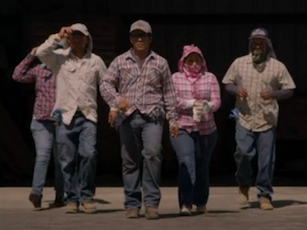 Noting the prevalence of mobile phones and mobile internet access even among poor, migrant farm workers, the largest poison-control agency in the country is turning to that technology to reduce human exposure to pesticides in California.
Noting the prevalence of mobile phones and mobile internet access even among poor, migrant farm workers, the largest poison-control agency in the country is turning to that technology to reduce human exposure to pesticides in California.
The California Poison Control System (CPCS), a state-funded program headquartered at the University of California-San Francisco, has introduced the Pesticide Safety Project, a mobile, bilingual effort to encourage reporting of pesticide exposure and to reduce pesticide usage in the home by keeping pests out. The Pesticide Safety Project has produced informational videos for distribution through community health workers and directly to farm workers.
The CPCS began testing the program in March and had a soft launch in May before the official unveiling last week. "Now we are beginning to get the word out," says Iana Simeonov, CPCS director of program development and project lead for the Pesticide Safety Project.
"We focused on videos because people didn't want to do a lot of reading," Simeonov says, based on meetings and focus groups the CPCS held with farm workers, health workers and low-income Hispanics across the state.
The CPCS already has an outreach program by text messaging, offering weekly tips on home safety, though a lot of people the organization is trying to reach have plans that charge them for incoming texts, so many opt out.
But the focus groups also revealed that half of the farm workers interviewed had Web-enabled phones, even though many were unaware that their phones were accessing the same Internet available on personal computers, according to Simeonov. "We noticed that they do a lot with their mobile phones," Simeonov, a mobile health and innovation specialist at the UCSF School of Medicine, tells MobiHealthNews.
The Pesticide Safety Project went with video based on interviews with health workers who serve farming communities. "The thing we heard from the community health workers is that they didn't want any more paper," Simeonov says.
The community health workers, a lay group of people known as "promotores", take health information to others on behalf of healthcare professionals. "They're basically community influencers," Simeonov explains. "It's very effective."
Material for the Pesticide Safety Project is freely available online in English and Spanish. Simeonov says the Spanish content was developed first because that is the native language of so many farm workers in California.
All content for the Pesticide Safety Project, which is funded by the California Department of Pesticide Regulation and the Western Center for Agricultural Health and Safety at UC-Davis in Sacramento, is Web-based. "We'd love to build apps, but it was too costly," Simeonov says.
The program is not providing any devices, but instead will rely on phones and tablets carried by farm workers and "promotores", according to Simeonov. "Farm workers rank their phones as among their prized possessions," Simeonov says. "It's the primary means of accessing the Internet for many of them."
The Pesticide Safety Project shot the videos in 4K resolution, with four times the pixel density as 1080p HD video, with the idea that they could be projected onto a movie screen.














